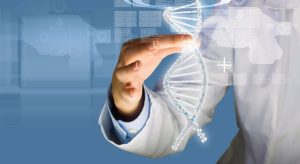Unusual Diseases: Aarskog Syndrome
 Aarskog syndrome, also known as Aaskorg – Scott syndrome, or faciesigiogenital dysplasia, is a very rare hereditary disease: it occurs in one person in a million. It manifests itself with pathological changes of the face, bones, genitals. Mainly men suffer from this disease, women are carriers of this pathology, and in them it can manifest only in a mild form.
Aarskog syndrome, also known as Aaskorg – Scott syndrome, or faciesigiogenital dysplasia, is a very rare hereditary disease: it occurs in one person in a million. It manifests itself with pathological changes of the face, bones, genitals. Mainly men suffer from this disease, women are carriers of this pathology, and in them it can manifest only in a mild form.
Causes of Aarskoga syndrome
This disease is genetic and is caused by mutations in the gene associated with the X chromosome. As you know, women have two sex X chromosomes, and men have X and Y chromosomes. They are passed to children from their parents. This explains the fact that boys are at risk of getting a mutated gene, along with the X chromosome, to which it is transmitted from a host mother. In girls, even in the case of a defective gene, another chromosome remains, which compensates for the pathology. As a result, the disease manifests itself in a milder form.
Manifestations of Aarskoga syndrome
The first symptoms of the disease can be detected in a child when he reaches the age of three.
As already noted, the disease affects the face, bones and the reproductive system.
Characteristic signs of facial syndrome include:
round face and broad forehead;
bowed eyelids;
small wide nose with nostrils turned forward;
slanted wide-set eyes;
wide furrow over the lip;
low set ears with thick lobes;
poorly developed upper jaw and teething lag, some teeth may be completely absent;
sometimes there is a hare lip.
Signs of Aarskoga syndrome
On the part of the skeletal system in Aaskorg syndrome, the following features are noted:
too short;
sunken chest;
curvature of the little fingers;
disproportionately short fingers, both on the legs and on the hands, possibly partial adhesion of the fingers (leather fold between the fingers).
Genital disorders include:
cryptorchidism (undescended testicles);
inguinal hernia;
deformed scrotum;
anomalies of penis development
delayed sexual development.
In addition, in children with Aarskog syndrome, mental abnormalities can be observed:
ADHD – attention deficit hyperactivity disorder;
cognitive impairment;
mental abnormalities.
Diagnosis and treatment of Aarskog syndrome
The diagnosis is made on the basis of the examination of the child and the identification of characteristic deviations in the structure of the person, as well as a survey of parents about cases of such a disease in the family. To confirm the diagnosis, an x-ray of the face and skull is performed. Genetic research can also be performed.
Unfortunately, today there is no way to fully recover from this pathology. Surgical operations are carried out to treat inguinal hernia, cryptorchidism, cleft lip. Orthodontic treatment is also performed to correct anomalies of the teeth.
Children with mental disorders (30% of all patients according to statistics) are recommended to be treated by a psychotherapist.
Hereditary predisposition to Aarskog syndrome can be identified at the planning stage of pregnancy by performing genetic studies.



